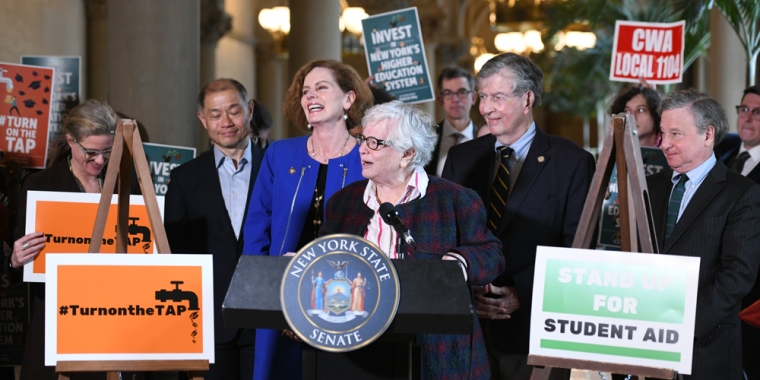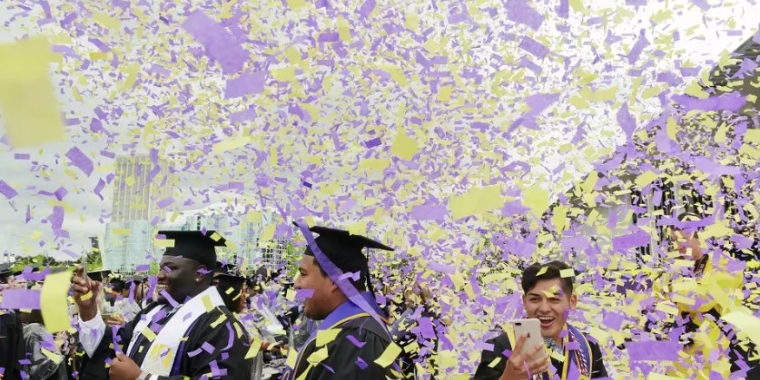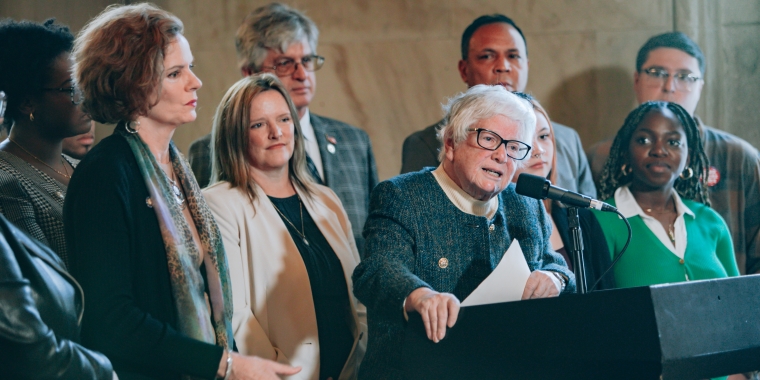Public School, Public Business
First published in print: Sunday, July 12, 2009
As the State University of New York copes with two years of state funding cuts totaling $334 million, state Sen. Toby Stavisky raises a question worth asking: Why, at a time when SUNY has $450 million in cash, has it apparently rebuffed the Paterson administration's proposal to tap some of that money to offset those budget cuts?
It turns out that SUNY has some answers to those questions. But the official word from Chancellor Nancy Zimpher's office is that she won't discuss the matter in public.
Come again?
Perhaps we should be used to it by now, yet it never fails to disappoint us that an institution like SUNY, presumably dedicated to the pursuit of knowledge and intellectual enlightenment, can be so opaque at times. This is not just a matter between one senator and the chancellor. This is an issue of public concern.
It came to light after Senator Stavisky, who chairs her chamber's Higher Education Committee, openly complained that she had written to Ms. Zimpher on June 17, but had not heard back for almost three weeks. After the senator voiced her complaint Tuesday, Ms. Zimpher responded with a phone call and a memo outlining SUNY's response.
In all fairness to Ms. Zimpher, she only assumed the chancellor's post on June 1, and has been traveling the state to familiarize herself with the sprawling 64-campus system.
And her memo does explain, albeit generally, SUNY's views about dipping into its cash. It says that the money belongs to the individual campuses, which are dealing with the state funding cuts as they best see fit. While some may use the cash, SUNY views that as a one-shot fix that wouldn't solve permanent reductions in state aid.
Moreover, the Student Assembly's president, Melody Mercedes, maintains in a letter of her own to Senator Stavisky that some of the money was collected from student fees designated for specific purposes. Using fees to pay for what tuition should have covered, she argues, amounts to double-billing students.
What isn't clear, however, is what exactly is going on at SUNY -- how many staff, for example, may be cut, and what programs, if any, might suffer.
Ms. Zimpher's memo states in only the most general terms that campuses will "minimize the disruption to our students, faculty and staff."
The Legislature deserves to know what's going on with the $10.7 billion SUNY system. So do all those who attend and work at SUNY. And so does the public, which helps support SUNY with its taxes.
Ms. Stavisky ought to put her oversight committee to use and invite Ms. Zimpher in for a more specific and more public discussion. If SUNY's decision turns out to be the right one, so be it. But if not, the time to change course is before another school year gets under way.
The issue:
A state senator wants to know why SUNY won't use some cash on hand to help it through tight times.
The Stakes:
Stakeholders, including the public, have a right to know what's going on in the SUNY system.
To comment: tuletters@timesunion.com


